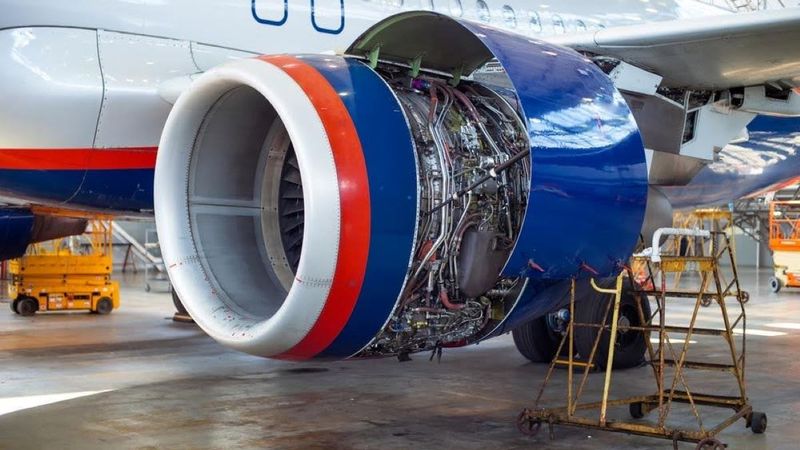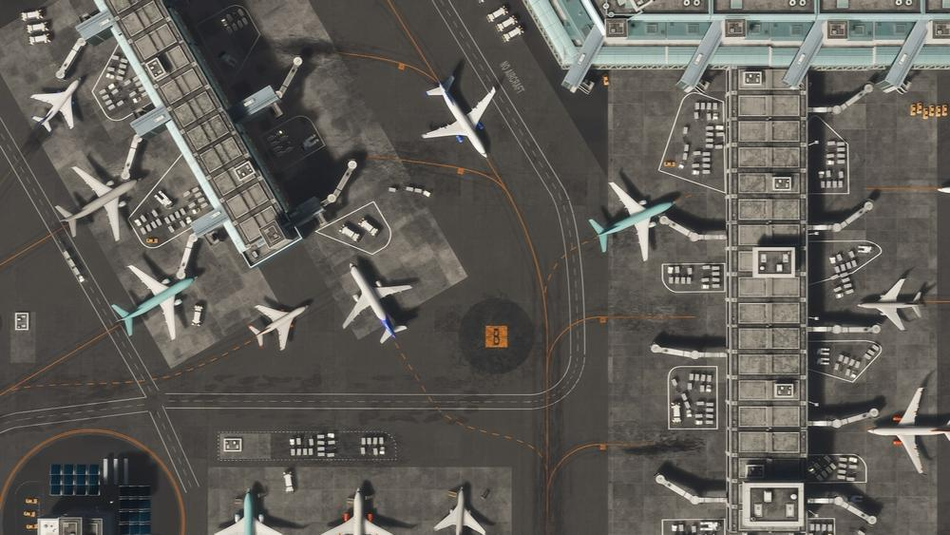Proactive Strategies for Managing Avionics Obsolescence
Futureproofing Aerospace Series. Article #5. The best time to deal with component obsolescence is before it even happens.
Stay at the cutting edge of the aerospace industry
We are pleased to have partnered with Rochester Electronics to launch the Future-Proofing Aerospace whitepaper.
Whitepaper highlights:
- Understand the Importance of Legacy Systems: Discover why preserving legacy avionics systems is crucial for reliability, compliance, and cost-effectiveness.
- Navigate Component Obsolescence: Learn about the challenges aerospace designers face due to outdated or discontinued components and how to address them.
- Explore Solutions from Rochester Electronics: Gain insights into how Rochester Electronics specializes in preserving and replicating obsolete components to ensure the continued operation of legacy systems.
Managing avionics obsolescence
The meteoric rate of technological advancement, coupled with the long lifecycle of avionics systems, poses a significant challenge: component obsolescence. If not managed proactively, avionics obsolescence can disrupt operations, increase costs, and compromise safety. To mitigate these risks, it is essential to implement strategies that anticipate obsolescence and address it before it impacts operations[1].
Rochester Electronics has spent decades helping customers prevent and deal with obsolescence should it occur. In this piece, we’ll discuss how predictive tools, strategic partnerships, inventory management, and lifecycle planning are all important strategies for managing avionics obsolescence.
Predictive Tools for Anticipating Obsolescence
Predicting component obsolescence is one major proactive method for managing electronic components' lifecycles[2]. This process involves forecasting when a component will become obsolete by heavily analyzing historical data, market trends, and lifecycle information provided by manufacturers.
In many cases, advanced algorithms and specialized software tools can be employed to assess these data points. These tools can offer detailed analysis by considering factors such as the rate of technological advancement, shifts in market demand, and manufacturers’ product roadmaps. By predicting obsolescence, companies can strategically plan for last-time buys, find alternative components, or redesign products, ensuring that supply chain disruptions are minimized.
Proactive obsolescence management is also essential for maintaining production schedules and reducing costs associated with sudden component unavailability. It allows for better inventory management, avoiding excess stock of soon-to-be obsolete components and reducing the need for expensive and time-consuming redesigns.
Furthermore, effective obsolescence prediction supports long-term strategic planning. By understanding the lifecycle of components, companies can better align their product development timelines and technology investments with market realities, ensuring sustained competitiveness and innovation. It also enables better supplier relationships, as companies can work collaboratively with component manufacturers to stay informed about potential obsolescence issues and jointly develop mitigation strategies.
Strategic Partnerships with Suppliers
Forming strategic partnerships with suppliers is another effective strategy for managing avionics obsolescence.
Close collaboration with suppliers can ensure a steady supply of components and facilitate early warnings about potential obsolescence issues. Suppliers can provide companies with valuable insights into component lifecycles, availability, and potential substitutes, enabling companies to make informed decisions about their inventory and procurement strategies.
Strategic partnerships also foster mutual trust and cooperation, which can be beneficial in negotiating favorable terms for component purchases and securing long-term supply agreements. These partnerships can also lead to joint development efforts, where suppliers work with companies to develop custom components that meet specific requirements and have longer lifecycles.
Inventory Management
Effective inventory management is another essential tool for mitigating the impact of avionics obsolescence.With an accurate and up-to-date inventory of components, companies can quickly identify which parts are at risk of becoming obsolete and take appropriate action. This may involve increasing stock levels of critical components, finding alternative parts, or initiating a redesign of affected systems.
To this end, advanced inventory management systems can track component usage and availability in real-time. Such systems can also integrate with predictive tools to provide a comprehensive view of obsolescence risks and enable proactive management.
In addition to tracking inventory, companies should also implement strategies for managing excess and obsolete stock. This may involve selling surplus components, returning unused parts to suppliers, or recycling materials. By effectively managing inventory, companies can reduce waste, lower costs, and ensure the continuous availability of critical components.
Lifecycle Planning
Lifecycle planning involves anticipating and managing the entire lifecycle of avionics components, from design and development to production, deployment, and eventual retirement. By considering obsolescence at each stage of the lifecycle, companies can develop strategies to mitigate risks and ensure the longevity of their systems[3].
During the design phase, engineers should consider the availability and longevity of components, selecting parts with long lifecycles and multiple sources of supply. Design for obsolescence, which involves creating systems that can be easily upgraded or modified, can also help mitigate the impact of obsolescence.
In the production phase, companies should establish robust processes for monitoring component availability and managing supplier relationships. This may involve implementing rigorous quality control measures, conducting regular supplier audits, and maintaining contingency plans for sourcing critical components.
During deployment, companies should continuously monitor the performance and availability of components, using predictive tools and inventory management systems to identify potential obsolescence issues. By staying informed about component lifecycles and market trends, companies can take proactive steps to secure necessary parts and avoid disruptions.
Finally, during the retirement phase, companies should have a plan for phasing out obsolete systems and transitioning to new technologies. This may involve conducting regular system performance reviews, identifying opportunities for upgrades, and working with suppliers to develop replacement components.
Regulatory Compliance and Operational Efficiency
Regulatory bodies, such as the Federal Aviation Administration (FAA) and the European Aviation Safety Agency (EASA), have strict requirements for the maintenance and certification of avionics systems[4]. An inability to comply with these regulations, due to obsolete components or otherwise, can result in costly fines, operational disruptions, and reputational damage.
By implementing proactive strategies for managing obsolescence, companies can demonstrate compliance with regulatory requirements and reduce the risk of non-compliance. This can involve maintaining detailed records of component lifecycles, conducting regular audits of systems and processes, and ensuring that all modifications and upgrades are properly documented and certified.
Operational efficiency is also enhanced by proactive obsolescence management. By anticipating and addressing obsolescence issues before they impact operations, companies can avoid costly downtime, minimize maintenance costs, and bolster the overall reliability of their systems. This can lead to increased operational availability and a competitive advantage in the market.
Conclusion
Proactive management of avionics obsolescence is essential for allowing the continuous availability and reliability of avionics components. By leveraging predictive tools, forming strategic partnerships with suppliers, implementing effective inventory management practices, and planning for the entire lifecycle of components, companies can anticipate and mitigate obsolescence risks before they impact operations.
Rochester Electronics works with customers to help them act ahead of time and develop a comprehensive approach to obsolescence management. Together with their customers, they aim to safeguard operations, reduce costs, and maintain their competitive edge in the market. In the next article in this series, we’ll take a look at specific examples of avionics customers who have benefited from working with Rochester Electronics.
Learn more about aviation obsolescence in our latest whitepaper.
Read more in the series:
Article 1: The Importance of Preserving Legacy Systems in Avionics
Article 2: The Causes of Component Obsolescence
Article 3: Customer Challenges with Obsolete Components
Article 4: Solving Obsolescence with Rochester Electronics
Article 5: Proactive Strategies for Managing Avionics Obsolescence
References
[1] https://www.rocelec.com/news/the-proactive-approach-to-obsolescence
[2] https://www.rocelec.com/news/predicting-component-obsolescence
[3] https://www.rocelec.com/news/component-management-begin-before
About Rochester Electronics
As an original manufacturer stocking distributor, Rochester has over 15 billion devices in stock encompassing more than 200,000-part numbers, providing the world’s most extensive range of end-of-life...




